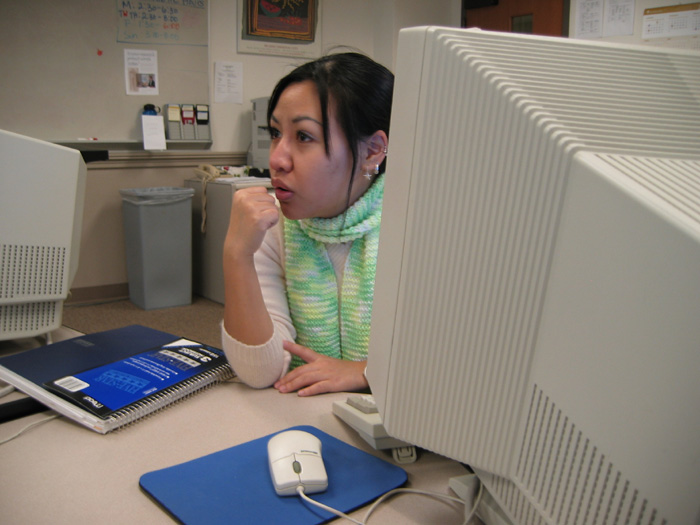 Background and History
Background and History
From the inception of the Computer-Integrated Courses (CIC) program in 1990,
our philosophy has emphasized technology as a complimentary tool to the traditional
classroom, not a replacement for it. Our goal has always been to integrate
technology into pedagogy in ways that combine the the best of traditional and
online instruction. Our primary focus, traditionally, has been the teaching
of college writing, and our facilities were designed with the writing classroom
in mind. Until recently, the writing classes offered in our classroom spaces
were all 100- and 200- level expository writing classes, and the pedagogies,
training methodologies, and program resources were all based on the model of
composition advocated by that program.
Integration and Classroom Design
CIC courses move back and forth between two different kinds
of classroom space. Each course spends half of its time each
week in a 24-station, networked computerized classroom. The rest
of its time is spent in a more conventional classroom. All classrooms
have been designed around the program's central goal--to provide
a student-centered, collaborative approach to teaching writing
and critical thinking skills. This is particularly true of our
computerized classrooms. In contrast to the design of most computer
facilities, the CIC computer-integrated classroom is arranged
primarily in three person user-groups. Students interact as a
community with one another while working at their individual
writing stations. The special design of our clusters gives students
access both to their own computer terminals and to a shared desk
space, facilitating the integration of private reading and writing
practices with face-to-face group work. Allowing students to
talk and to work in groups in the computer classrooms encourages
the development of collaborative skills and community, reducing
the anxiety that students might be feeling about using computers
or about writing.
Our more traditional classrooms are supplemented by access to a laptop computer
and video player, each which connects to a projector. This projector allows
students and instructors to collectively view and discuss a wide range of materials
-- from documents and web pages to DVDs to songs stored on an MP3 player. This
design also provides our instructors with access to the materials students
generate in their time in the computer classrooms, and opportunities for viewing
and discussing that material as a class. Dialogues that begin in the computer
classrooms can be continued in the other classrooms through the use of the
projector. A student paper composed in Microsoft Word may be projected and
edited by the whole class, or students’ electronic postings
may be projected to begin a focused class discussion. While students move back
and forth between two different classroom spaces, the available technology
helps connect these two spaces into
one integrated classroom experience.